
| YOU ARE HERE: H. P. OLIVER HOME > BOOKS > ESTELLE VISUALIZATIONS |

|
VISUALIZATIONS |
|
CHAPTER ONE In 1916 the city received a Carnegie grant to construct a new library, and the resulting three-story mission revival edifice was completed the following year. |
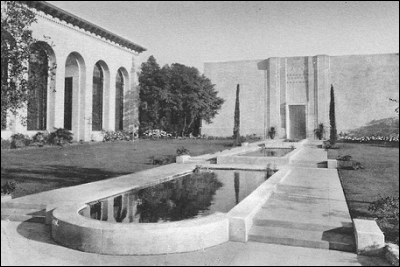 |
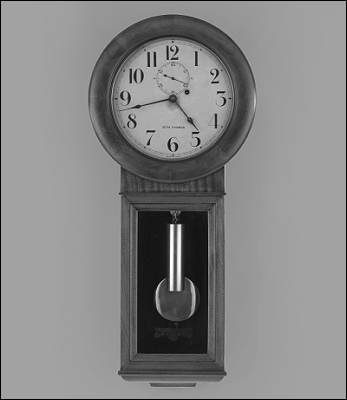 |
CHAPTER ONE The large Regulator clock mounted on a column near the library entrance indicated the time was four-forty-two, and I decided to take a shot in the dark. |
|
CHAPTER ONE I said I wouldn't mind at all, and we shook hands again before she climbed aboard her bright blue bicycle and pedaled off in a northwesterly direction on Anacapa Street. |
 |
 |
CHAPTER TWO What I found at 1919 Las Tunas Road was a long winding drive through a grove of large oak trees to a sizeable two-story mansion in a Mediterranean style of architecture that included a red tile roof, balconies, and a substantial oak entrance door equipped with a large black iron knocker. I used this device for its intended purpose. |
|
CHAPTER TWO Looking at the bookshelves directly behind the desk, I spotted a remarkable brass ship's clock with large black numerals on a white face. The clock was cradled in an ornately carved wooden chest that bore the inscription, "Highland Unicorn 1875." I was apparently looking at the ship's clock from Duncan Abernathy's first ship. Judging by the clock's prominent position in the room, I concluded it was a cherished memento of Estelle Abernathy's maritime upbringing. |
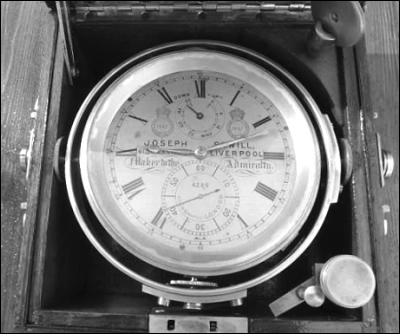 |
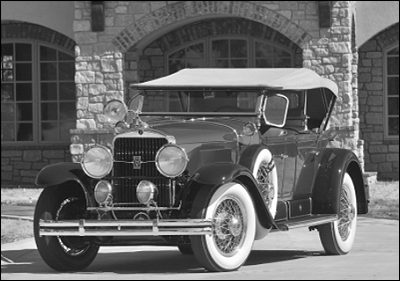 |
CHAPTER TWO . . . as I walked along the wide, curved driveway to where I parked my car, a shiny new Cadillac Phaeton—the kind with dual cowls—passed me. It was a dark red in color and its rear doors bore gold crests surrounding the initials E and A. Three people rode in the automobile. A liveried chauffeur was driving and an attractive young woman with black hair shared the rear seat with Estelle Abernathy. |
|
CHAPTER THREE I calculated the Tribune was going to receive a bill of more than one-hundred-dollars, an amount slightly greater than my monthly salary. That realization gave me cause to wonder if shirt studs and cufflinks really must be made of genuine Australian onyx to achieve the height of fashion. |
 |
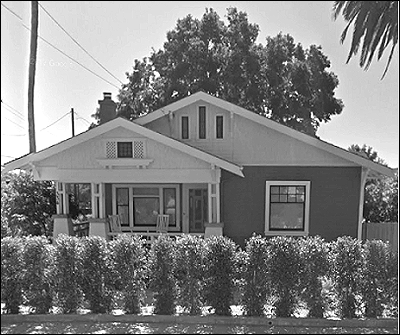 |
CHAPTER FOUR Frederick Hamm and family resided in a tidy craftsman style home at the corner of Arrellaga and Laguna Streets about a mile north of town. Their quiet neighborhood was populated by modestly prosperous homes, mostly in the same architectural character as the Hamm's home. |
|
CHAPTER FOUR The Granada Theater was housed in an eight-story brick and stone building with three sets of double entrance doors below a marquee with "Granada" spelled out in a large serif font with a Mediterranean feeling about it. |
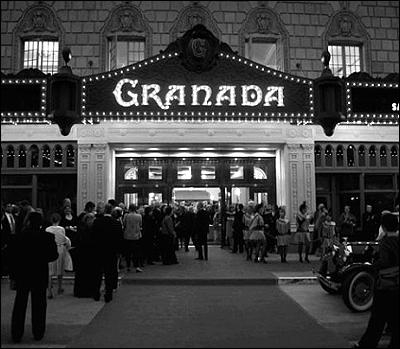 |
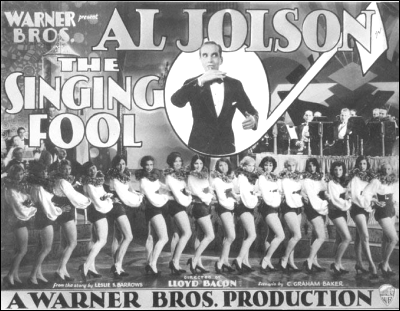 |
CHAPTER FOUR The Singing Fool was a disaster of the first order from the time the theater lights dimmed until they came back on. The only positive thought I had throughout the film was that Jolson played the role of a fool admirably. Ballyhooed as a dramatic love story, The Singing Fool was one of those stories clearly written for the sole purpose of tugging at the heartstrings of those willing to pay for the dubious privilege of feeling sad and depressed. |
| CHAPTER FOUR Even in the darkness we could distinguish rows of white breakers rolling onto the beach below us, and while the night air was cooling, it wasn't so cold we couldn't roll down the windows a few inches to better hear the surf. Besides, the slight nip in the air gave Eliza an excellent excuse to slide over closer to me on the seat. |
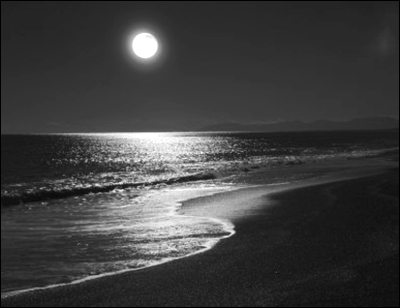 |
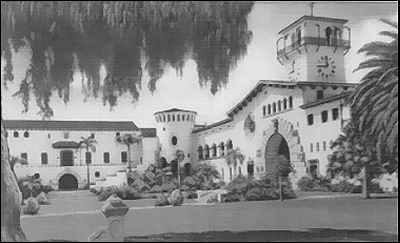 |
CHAPTER FIVE The three-story Courthouse occupies a full city block of Santa Barbara real estate, but the building itself takes up less than half of that space. The rest of the block is filled by a park-like garden planted with lush lawns on raised and sunken levels, towering palm trees, and all manner of exotic greenery I could not identify if my life depended on it. |
CHAPTER FIVE The globs looked to range in diameter from about an inch to five or six inches and had a slight sheen to them, indicating a reflective surface.
|
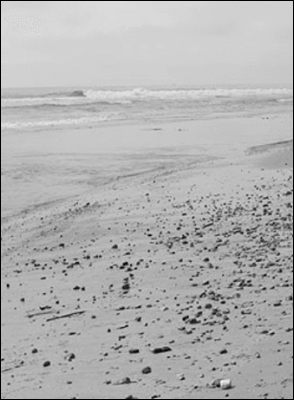 |
 |
CHAPTER SIX Her dress was a shimmering silver-gray. I discovered that the shimmer was due to silver beadwork and iridescent sequins stitched in simple geometric patterns accenting the shape of the gown. Sleeveless, the dress featured V-shaped necklines front and back that were just deep enough to be a little spicy without seeming indecent. The hem was sort of scallop-shaped and ended at a point just below her knees. |
CHAPTER SIX Driving past a long line of Cadillacs, Packards, and even two sporty Duesenbergs, it occurred to me that, if automobiles had feelings, my humble, but loyal little Chevrolet was probably feeling quite out of place among such automotive luminaries. For that matter, I was having some of the same feelings about myself, so I gave it a pat on the dashboard. Eliza gave me a strange look, but didn't ask. |
 |
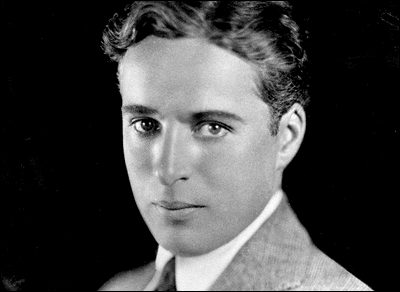 |
CHAPTER SIX "Very useful, but you missed one of the biggest names here." |
CHAPTER SEVEN . . . ten minutes later I pulled to the curb in front of the garden court complex on Micheltorena Street. I unlocked the door to cottage number ten and, hoping my neighbors had gone to bed already, ushered Eliza inside. |
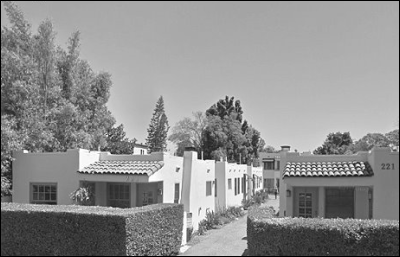 |
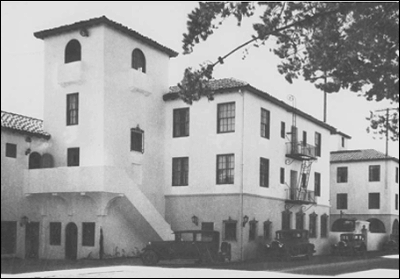 |
CHAPTER EIGHT By the time we reached the little community of Montecito the storm had dwindled into a drizzle and we had no trouble finding the rambling three-story Mediterranean-style Montecito Inn. |
CHAPTER NINE We ended up traveling southbound on the wide two-lane US Highway 101, but for only a short distance. Eliza pointed to a barely paved road leading off toward the beach on our right. "Take that turn. It goes straight to the beach you want to see." |
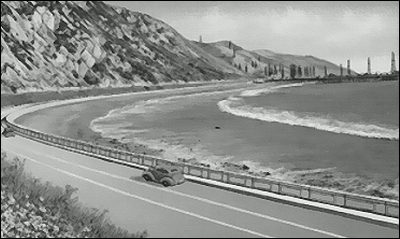 |
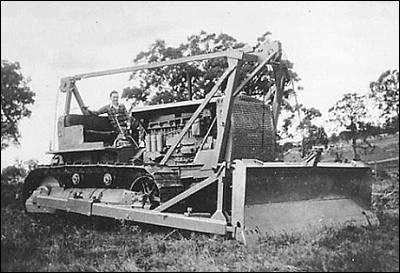 |
CHAPTER NINE . . . a half-pristine beach and a noisy diesel-powered tractor with a push-blade. The operator of the tractor was using the blade to scrape the top layer of sand, along with thousands of crude oil globs, off the beach and onto large piles paralleling the railroad tracks. |
CHAPTER TEN While we were talking, I moved a cardboard box to my desk/table and removed the black carrying case that held my trusty Underwood portable typewriter. After removing the typewriter from its case, I put the case back in the cardboard box and set the typewriter in front of the kitchen chair I planned to use at my desk. |
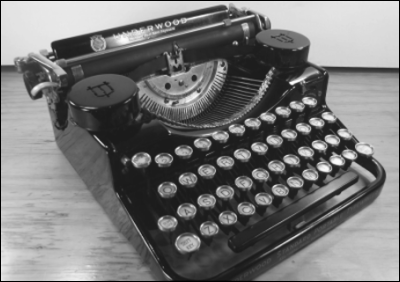 |
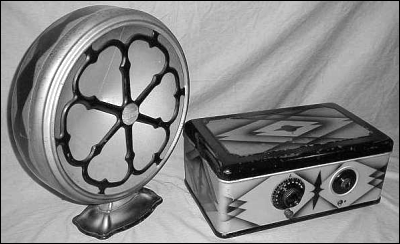 |
CHAPTER TEN I set about installing the new typewriter ribbon. "Yes, it was given to me as a birthday present two years ago. It's an Atwater-Kent and it works very well." |
| CHAPTER TWELVE The County National Bank and Trust Company, to which Eliza entrusted her checking account had all of the traditional confidence-inspiring icons associated with a successful financial institution. |
 |
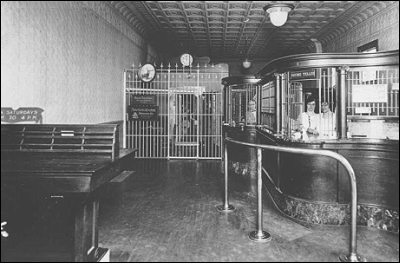 |
CHAPTER TWELVE These included a high-ceiling lobby with an abundance of dark wood paneling, a highly polished granite floor, and gleaming brass bars in front of the teller windows. |
CHAPTER TWELVE Trenwith's Department Store was in a two-story commercial structure called the Howard-Canfield Building, and the women's departments—there seemed to be several—took up most of the first floor on both sides of the main entrance. |
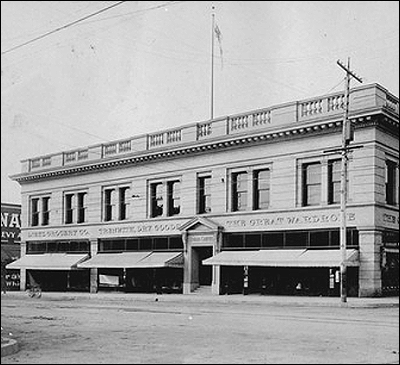 |
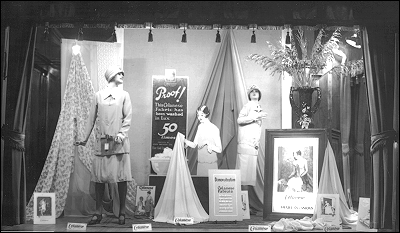 |
CHAPTER TWELVE Sounding quite proud of herself, Eliza enumerated her purchases. "All told, I bought three skirts, two dresses, four blouses, two sweaters, a leather purse, a nice warm jacket, two pairs of shoes, two cloche hats, two pairs of gloves, six pairs of silk stockings, six pairs of undies, two silk slips, and assorted accessories, including a couple of belts and a beautiful tiny cloisonné typewriter pin." |
CHAPTER TWELVE "All right. Where is this Wiggly-Piggy?" "Piggly-Wiggly, darling. It is about three blocks further south on State. It will be on our right and there is a good produce market right next door." |
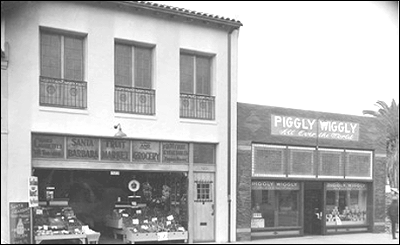 |
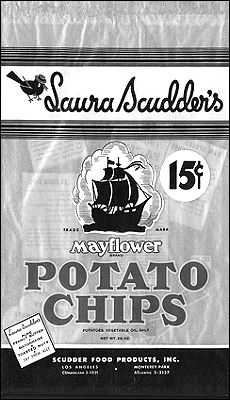 |
CHAPTER TWELVE Then I upped the ante by opening a wax paper package of Laura Scudder potato chips, one of our few non-essential grocery purchases, and poured some into a bowl, which I set at the center of the table. |
CHAPTER THIRTEEN I removed the key from its slot in the ignition switch and sat there for several seconds with the key in my hand. A voice in my head was telling me to poke the key back into its slot and get the hell out of there. I was very near to doing what the voice said when Estelle Abernathy's front door opened and I was committed. |
 |
 |
CHAPTER FOURTEEN While Eliza made us some of her proper coffee, I drove up to State Street and purchased a copy of the Post-Dispatch from a young man in a snappy tweed cap. |
CHAPTER FIFTEEN Eliza arrived at the table with three plates of Swiss steak. |
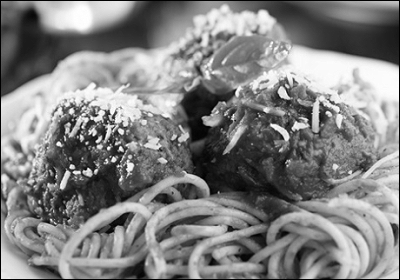 |
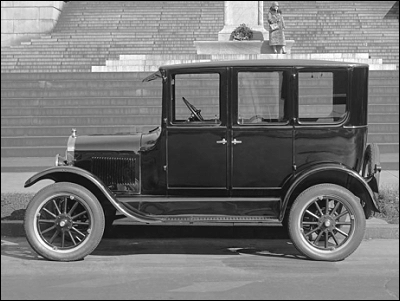 |
CHAPTER FIFTEEN Then I saw her to her automobile out on the street. I held the car door open for her and Mabel climbed into to her two-year-old Ford four-door sedan . . . |
CHAPTER SIXTEEN My banking completed, we made our way north and west of the downtown area to the old mission and parked alongside the formal rose garden. |
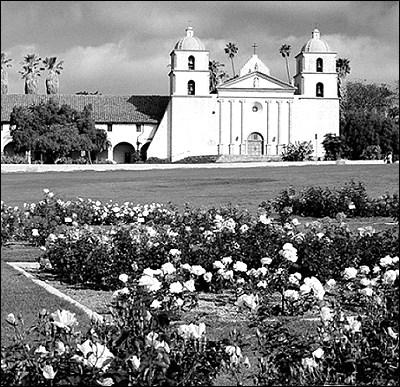 |
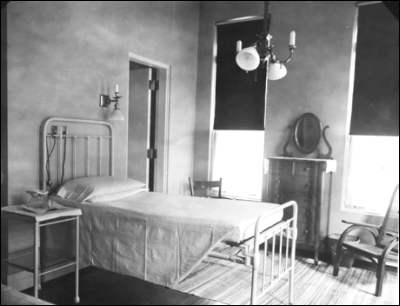 |
CHAPTER SEVENTEEN I awoke to find myself in a hospital room that seemed quite nice. Besides the bed I was in, the room was furnished with a small bureau below a mirror on one of the pale blue walls, a snazzy wicker wastebasket, and a colorful rug with blue and gray stripes. There were two windows, one on each side of the bureau, and a classy overhead light fixture with two electric light bulbs and a pull chain to turn them on and off. |
CHAPTER SEVENTEEN "No. I decided to take you to Ventura. This is Big Sisters Hospital?" "Big Sisters? That sounds like a club for high school girls." She smiled. "I'm glad you haven't lost your sense of humor in all of this. The staff here has treated us very nicely. I'm afraid I was pretty panicky when I got you here. The nurses took charge and knew just what to do." |
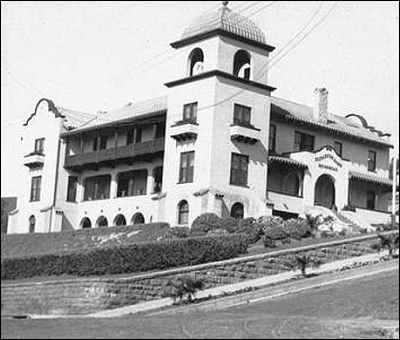 |
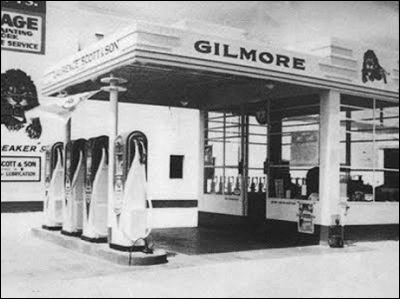 |
CHAPTER EIGHTEEN Eliza drove us to a Gilmore gas station right on the highway and we pulled in to use their public pay telephone. The required instrument was installed in a wooden booth with glass windows right alongside the station office. Eliza stepped in to place the call. While she did that I managed to slide over behind the steering wheel and pull up next to one of the station's gas pumps. An attractive blonde woman—all of Gilmore's station attendants were attractive women—filled our tank with Gilmore's Blu-Green gasoline while I kept my eyes on Eliza. |
CHAPTER NINETEEN "Do you use regular or high-test?" "Regular works fine." Eliza instructed the attendant to fill our tank with regular and I dug some cash out of my wallet. I handed a few dollars to Eliza for the gas and said, "I'm going to visit the restroom. I'll be right back." |
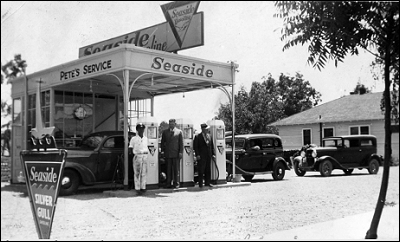 |
 |
CHAPTER NINETEEN Minutes later she came back carrying an open bottle of Coca-Cola and tiny white tin of Spartan aspirin. Reading the dosage instructions on the back of the tin, she said, "It says you can take up to three of these every four hours. Let's try two for now." |
CHAPTER NINETEEN This was not my first trip to Tijuana, so I knew what to expect, but it always depresses me a little to see such poverty so close to home. The entire town is a slum. Except for the downtown area few of the streets are paved and most of the commercial buildings look like sets from old-time cowboy movies. |
 |
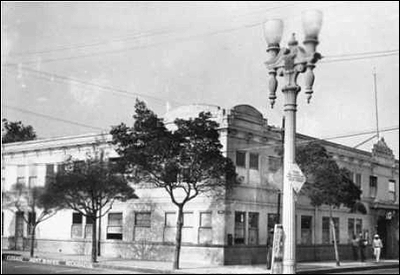 |
CHAPTER NINETEEN Only the popular tourist attractions are at all swanky, like the horse track at Agua Caliente, the new Hotel Commercial, and the Mexicali Beer Hall, which claims to have the longest bar in the world. Tijuana's City Hall also turned out to be one of the few attractive buildings in town. |
CHAPTER NINETEEN It turned out I was right about it being easier to leave the US than get back into it. We waited nearly half an hour for our turn with the border guard. Once there, we were ordered to present our drivers' licenses to prove who we were. Then came the questions. Where did we go in Mexico? How long were we in Mexico? What did we do in Mexico? Did we make any purchases in Mexico? Were we bringing any fruit or vegetables back into the United States? Did we have any items of contraband in our automobile? |
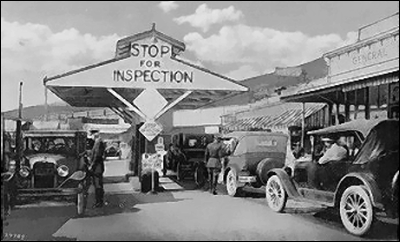 |
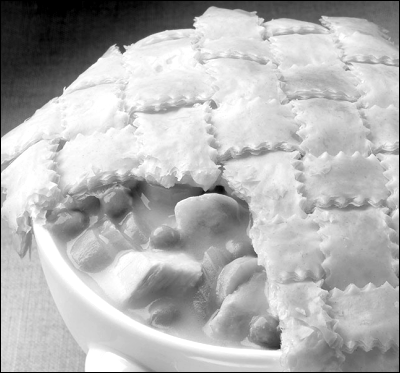 |
CHAPTER NINETEEN Not surprisingly, the principal item on the menu was chicken pot pie. An ala carte pie could be had for twenty-five cents, or for a nickel more, the pie would be served with gravy, mashed potatoes, vegetables, Cole slaw, or soup. |
CHAPTER NINETEEN Finishing our wedding dinners, we drove a block south on Rosecrans and found a Texaco service station with a public telephone. Eliza pulled up to a pump and we got the tank filled with gasoline before parking next to the station's telephone booth. |
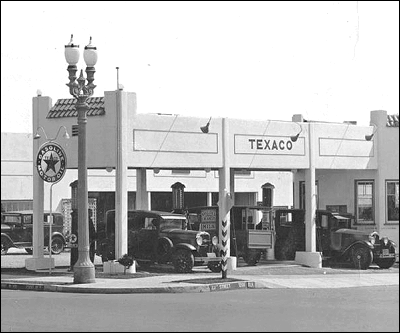 |
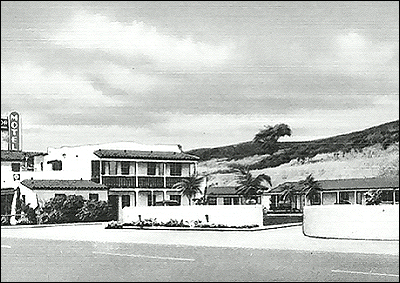 |
CHAPTER NINETEEN The place had a new look about it and was built in the hacienda style of architecture with Spanish tile roofs and an adobe facade. Behind a low wall, the Ponto Beach Motel consisted of several buildings, including a two-story section with a balcony. The driveway was a rectangle around a central lawn and provided access to parking places in front of the rooms around its perimeter. |
CHAPTER TWENTY I awoke Saturday morning with very little pain and a sunny disposition. The world outside Room Ten at the Ponto Beach Motel was another matter entirely. A storm moved in during the early morning hours and rain was coming down in buckets. I could hear thunder and see flashes of lightening through the window curtains. |
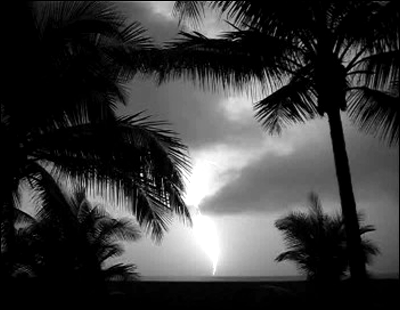 |
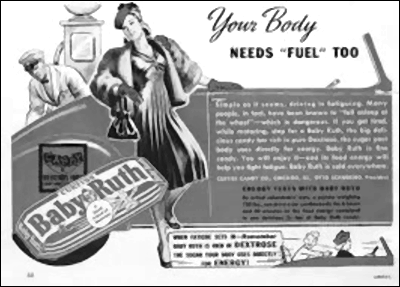 |
CHAPTER TWENTY By nine-thirty we were northbound on Highway 101 again with a full tank of gasoline, a full bottle of Bayer aspirin, and two Baby Ruth candy bars for emergency rations. |
CHAPTER TWENTY Another effect of the storm was a general deterioration of traffic. There were few cars on the road, but they were driving cautiously and we were seldom able to travel more than thirty-five miles per hour. The driving was tedious and I was grateful we were in no hurry. |
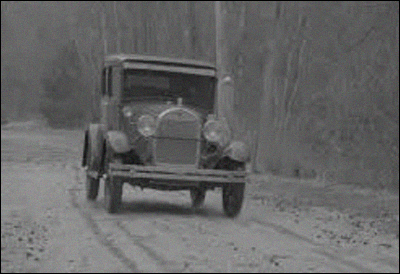 |
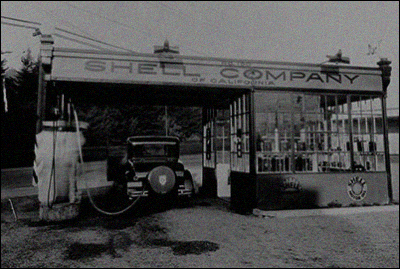 |
CHAPTER TWENTY So after filling up the Chevrolet's gasoline tank at a Shell station that still had electrical power for their pumps, we got back on Route 101 and continued slogging our way north. |
CHAPTER TWENTY I pulled into the driveway of a small motor court with the nautical name of Sea View Cottages. |
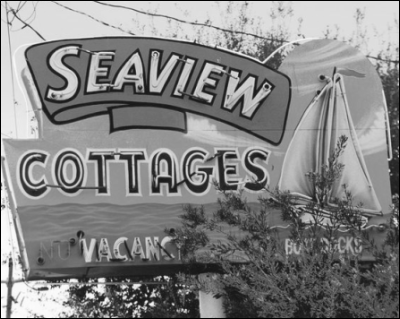 |
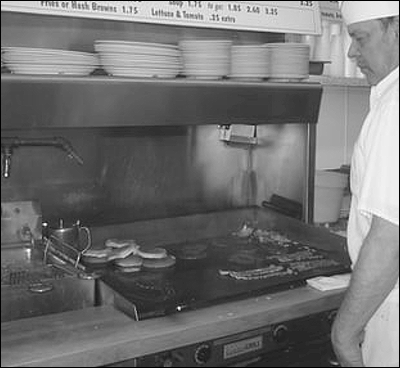 |
CHAPTER TWENTY-ONE The little café was called The Anchorage and the breakfasts they were making smelled so good, we decided to splurge on some breakfast to go with our coffee. |
CHAPTER TWENTY-ONE The main entrance to Hollywood by the Sea features a concrete arch supported by two square pillars. The sign on the arch says "Welcome to Hollywood by the Sea" and "Park Your Car/Enjoy the Beach." A concrete roadway under the arch runs parallel to the coastline and offers access to the home lots and attractions. |
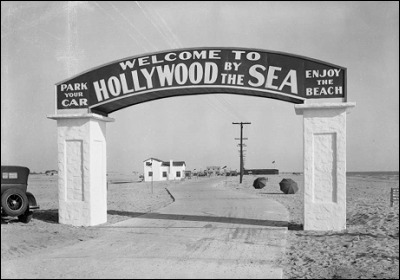 |
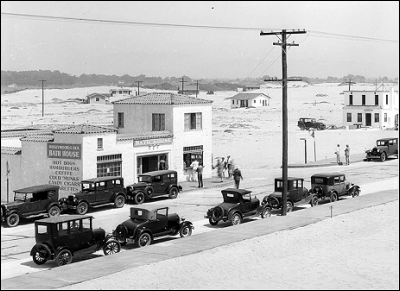 |
CHAPTER TWENTY-ONE I parked next to a building called the Beach House, a sundries store with a walk-up window where snacks and drinks are sold. I bought two cardboard cups of coffee to help keep us warm, and then drove back to the entrance where we were to meet Sergeant Sullivan in about fifteen minutes. |
CHAPTER TWENTY-TWO The Pierpont Inn was exactly where I remembered it being, on a bluff overlooking California Route One and the Pacific Ocean. I pulled into their drive and we looked things over. The hotel was a two story craftsman style building within a grove of trees that sheltered the grounds from offshore winds. |
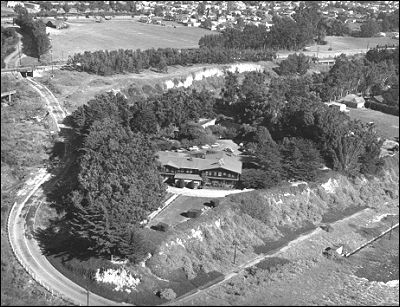 |
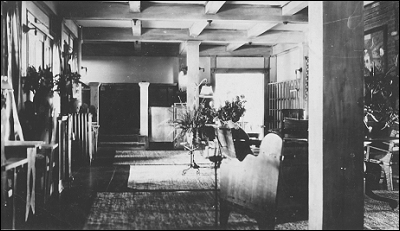 |
CHAPTER TWENTY-TWO The entrance to the Pierpont Inn was a tall door with inset glass panels. The lobby was finished with polished wood paneling and large windows. The furnishings were also wood with brown leather cushions. The setting seemed quite homey. I hoped such hominess did not come at too great a price. |
CHAPTER TWENTY-TWO An hour later I sat back in my chair to read what I had written. When Eliza noticed I was no longer typing, she stood behind me with her hands on my shoulders. I looked up and saw she was wearing the little typewriter pin purchased with her new wardrobe at Trenwith's Department Store. "I like your pin." She smiled. "I thought it was appropriate since you are writing again. How is it coming?" |
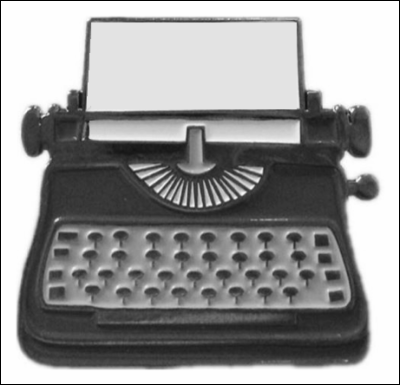 |
 |
CHAPTER TWENTY-TWO There is a block-square park across the street, so we took advantage of what turned out to be a warm sunny day by making ourselves at home on a bench. |
CHAPTER TWENTY-THREE A few minutes later we pulled to the curb in front of a three-story brick building. A large sign out front said, "E. P. Foster Library." |
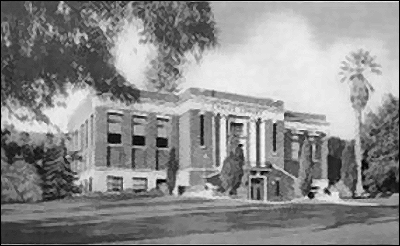 |
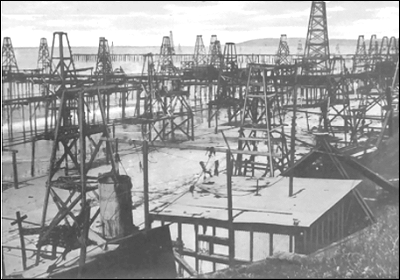 |
CHAPTER TWENTY--THREE The derricks, piers, and railroad tracks of the oil field stretch along the beach below a bluff next to the highway. |
CHAPTER TWENTY-THREE A large stake-bed truck was nearing the front of the southbound line of traffic, and as it passed the last sheriff's car parked next to the highway, the truck swerved right onto the shoulder of the road and accelerated. |
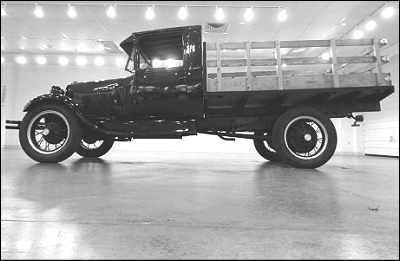 |
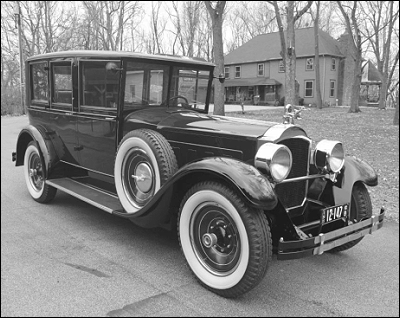 |
CHAPTER TWENTY-THREE The big black car was a custom Packard limousine, one I thought I had seen before. There just aren't many six-thousand-dollar custom limousines around, even in Santa Barbara. |
CHAPTER TWENTY-FOUR I was editing the article when our dinners arrived. At least that was the assumption I made when someone knocked on the door. |
 |
 |
CHAPTER TWENTY-FIVE We followed Sunset all the way downtown to Broadway. The Examiner Building takes up more than half of the block between Eleventh and Twelfth Streets. It is a long narrow two-story building of Spanish architecture with a large third floor cupola. Architecturally, the most notable features of the Examiner Building are the fifteen arches spanning the Broadway side of the structure. |
CHAPTER TWENTY-FIVE Not knowing how long I was likely to be, we decided Eliza would come in and wait for me in the Examiner's lobby rather than in the car. We found a comfortable seat for her in the elaborate two-story guilt and marble lobby, and after consulting the directory, I rode the elevator to the second floor. |
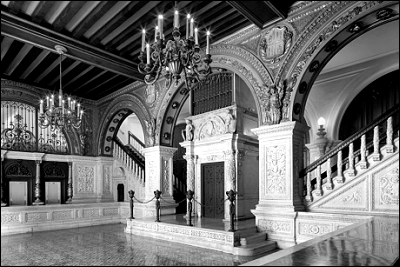 |
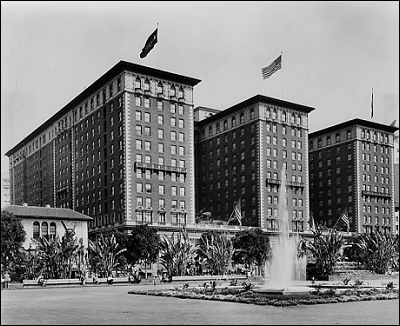 |
CHAPTER TWENTY-FIVE We turned left just beyond Pershing Square, and then right into an alleyway that led to the underground guest parking area for the Los Angeles Biltmore Hotel. |
CHAPTER TWENTY-SIX Leaning close so as not to be overheard, Eliza said, "Lester, are we in the right place? This looks more like a gaudy bordello than a hotel." I almost laughed out loud. "Eliza, please show a little respect. Some fool spent a fortune building and decorating this barn. Besides, how would you know what a bordello looks like?" "I read books, darling." |
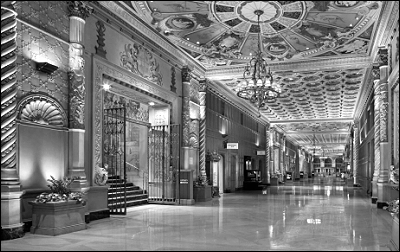 |
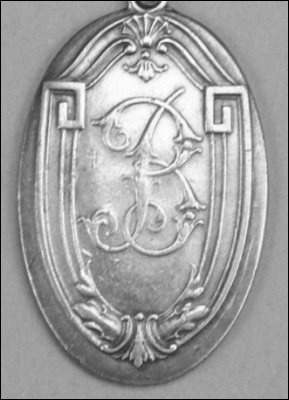 |
CHAPTER TWENTY-SIX After that he handed me an oval sterling silver key fob with a stylized B on one side and the number of the Ambassador Suite on the other. Our key dangled from a silver ring at the top of the fob. |
CHAPTER TWENTY-SIX The Ambassador Suite, we soon discovered, consisted of three rooms. What appeared to be the living room was dominated by a white marble fireplace accompanied by an assortment of armchairs, a sofa, end tables, and a writing desk, all in a modern style and made of blond woods. |
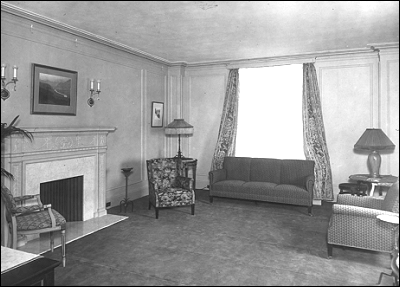 |
 |
CHAPTER TWENTY-SIX The Biltmore's less formal dining establishment, simply known as the "Coffee Shop," was a study in maroon, and could be entered from the street through a stylish stainless steel revolving door to the left of the hotel's main entrance or through double glass doors from the hotel lobby. We entered via the lobby. |
CHAPTER TWENTY-SIX Coffee shop diners were seated in upholstered booths, at free-standing tables, and on stools along a serpentine counter against one wall. |
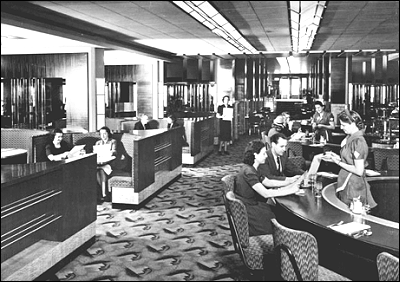 |
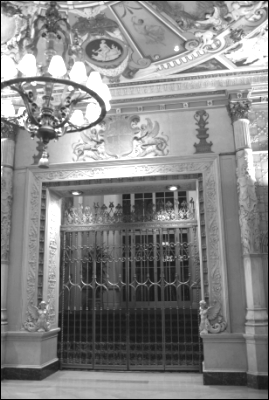 |
CHAPTER TWENTY-SEVEN At seven o'clock we passed through a pair of elaborate eight-foot gold-painted ornamental iron gates and entered the Gold Room, where a fellow in a tux was tinkling his way through Fascinating Rhythm on a grand piano. |
CHAPTER TWENTY-EIGHT Mornings are busy times for afternoon newspapers and when I arrived a few minutes before nine Wednesday morning, the Examiner's newsroom shared many similarities with a three-ring circus. Amazingly, it is in such environments of barely controlled chaos that daily editions of the world's greatest newspapers are born. |
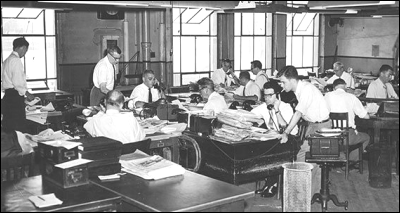 |
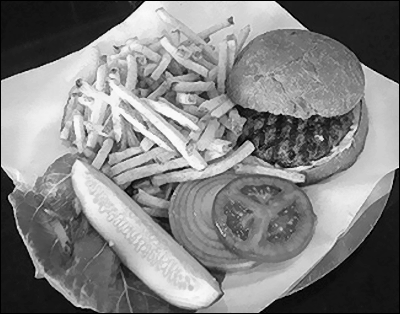 |
CHAPTER TWENTY-EIGHT My plate held about the biggest hamburger I have ever seen. Along with it was a pile of French fried potatoes and garnish for the burger consisting of lettuce, tomatoes, a slice of Bermuda onion, and dill pickle slices. |
CHAPTER THIRTY From Westlake one can follow a zigzag route around MacArthur Park and pick up Wilshire again a couple of miles to the west. This section of Wilshire Boulevard is becoming a fashionable shopping district promoted as the "Miracle Mile." Several large modern department stores are going up along this four or five block stretch of the road. |
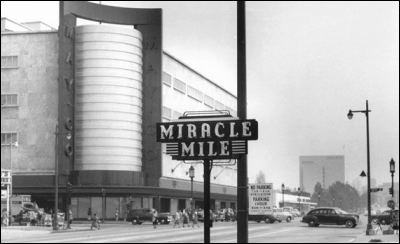 |
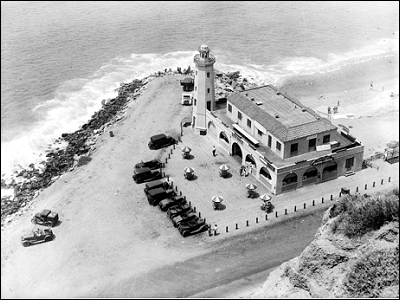 |
CHAPTER THIRTY A few miles north on Pacific Coast Highway we came across a substantial building attached to a mock lighthouse with signs announcing The Lighthouse Bathhouse and Restaurant. This establishment was perched on a small point of land which was paved for automobile parking. I pulled our Chevrolet into a parking spot overlooking the water and turned off the engine. |
CHAPTER THIRTY Eliza and I both chose something called a "Shrimp Louie." The Louies turned out to be green salads piled high with tiny bay shrimp and other goodies like black olives and slices of hardboiled egg. The salads were served with a Russian style dressing. |
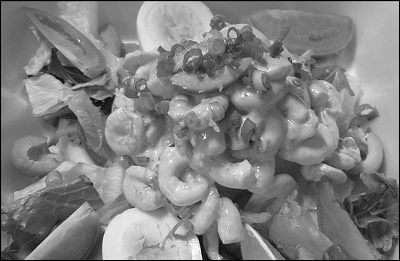 |
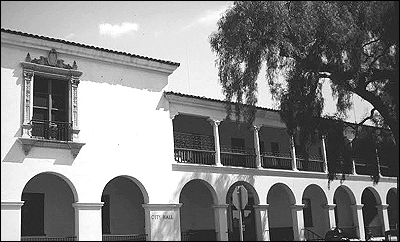 |
CHAPTER THIRTY-TWO Eight blocks later I turned right again, this time into the City Hall parking lot across the street from the Tribune offices. |
CHAPTER THIRTY-TWO "This is hardly an interrogation, Mister Kinney. Besides, in a murder investigation, nothing is off the record." |
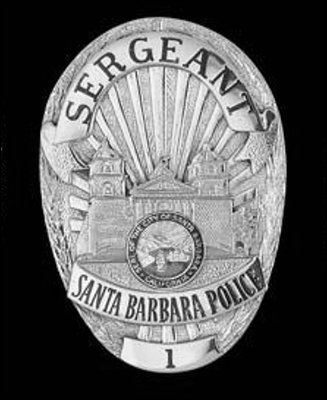 |
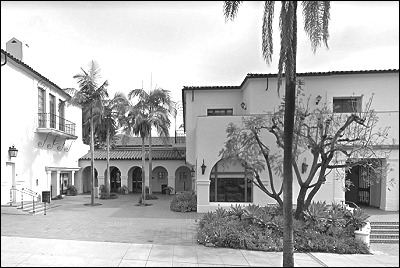 |
CHAPTER THIRTY-THREE The offices of Edwin Ingraham, Attorney at Law, were located around the corner from the Santa Barbara Superior Court and across Figueroa Street from the County Courthouse and Clerk-Recorder. I have heard the neighborhood referred to as "Lawyer Row" because it seems every attorney in town is entrenched there. If one happened to be allergic to practitioners before the bar, this was a swell place to develop a rash. |
CHAPTER THIRTY-THREE While Bob was answering my question, I heard the courthouse clock chime. I started counting the chimes purely from habit, but they only sounded once. As with clocks in many churches and public buildings, a single chime signaled the half hour. It was four-thirty. Suddenly I knew what was bothering me about the coroner's time of death. I yelped an involuntary "Damn!" Of course Bob Carlson heard me. "What? What's the matter, Lester?" "Save a spot on the front page, Bob. I just caught the Santa Barbara coroner and the local cops in a big, big mistake. I have to go. Talk with you at eight." |
 |
 |
CHAPTER THIRTY-FIVE The case was a rectangle of gold. The watch's face was white with large square numerals in gold surrounded by thin outlines in black. The hands were a matching shade of gold. The strap was leather and smelled of quality. |
CHAPTER THIRTY-SIX He led us into the sanctuary, a large rectangular room with graceful arched wooden beams supporting its peaked ceiling. |
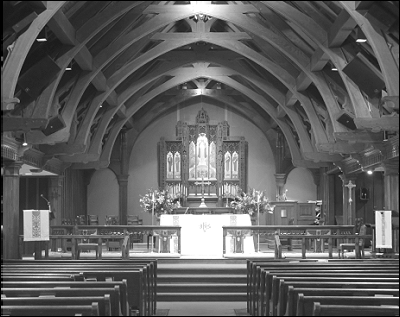 |
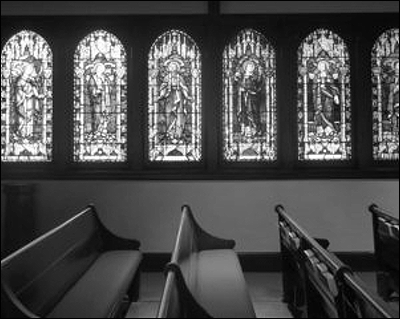 |
CHAPTER THIRTY-SIX The space was mostly lit by stained glass windows lining both longitudinal walls. The light coming through their leaded designs glowed with vivid reds, blues, and golds. |
CHAPTER THIRTY-SIX As things wound down people gathered into small groups in front of the church for conversations. Mabel and Eliza were talking quietly and I simply stood to one side with my arms folded trying to look inconspicuous. |
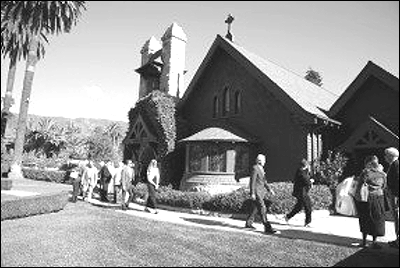 |
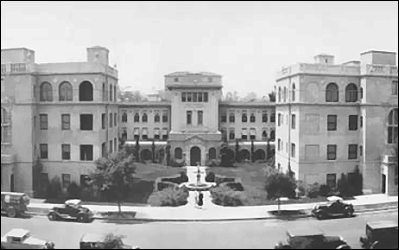 |
CHAPTER THIRTY-SEVEN "No, darling. This is Cottage Hospital in Santa Barbara." |
EPILOGUE As I walked into the bedroom Eliza struck what could only be described as a sexy flapper pose and said, "What do you think, mister? Am I snazzy enough to appear at the fancy dress ball on the arm of a big-time newspaper editor?" |
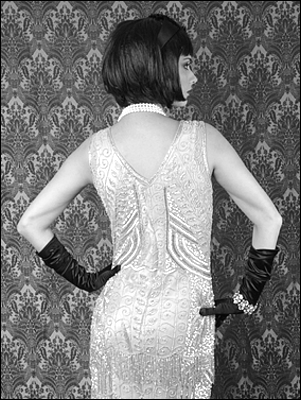 |
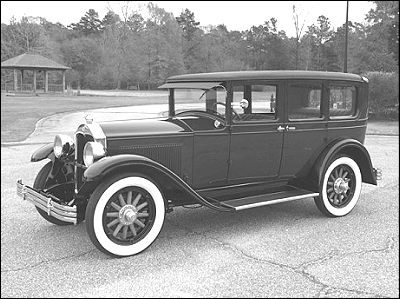 |
EPILOGUE A few minutes later I opened the passenger door of Frederick Hamm's blue Buick sedan and helped Eliza into the car. By the time I got in the other side, she had slid over to the center of the large front seat to sit next to me. |
EPILOGUE The new Biltmore Hotel is situated on lavish grounds at the beach a few blocks south of the Montecito Inn. The place was huge and classy as all get out. |
 |
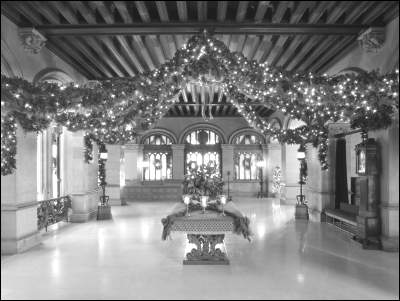 |
EPILOGUE The Biltmore's swanky lobby was decked out with an overabundance of festive holiday trimmings . . . |
EPILOGUE She sparkled as brightly as the silver angel atop the Biltmore's giant Christmas tree, and that sparkle owed as much to Eliza's natural beauty as it did to her gown. She was the essence of grace and poise. |
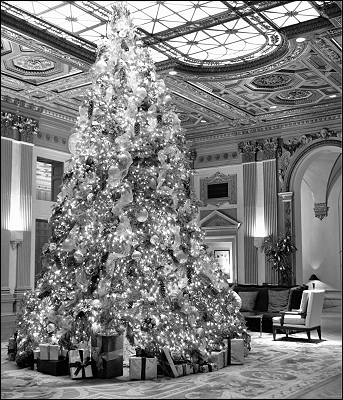 |
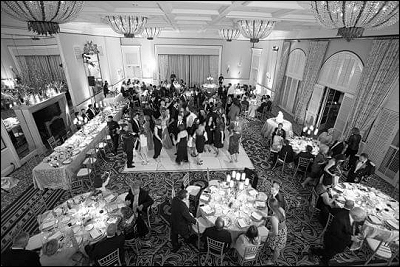 |
EPILOGUE When the wave of congratulatory handshakes ebbed, I escorted Eliza to the dance floor. Weeks' orchestra was playing a popular ballad, What a Difference a Day Makes. |
EPILOGUE There was a tear in her eye as she whispered, "Yes, mister, I am definitely keeping you." |
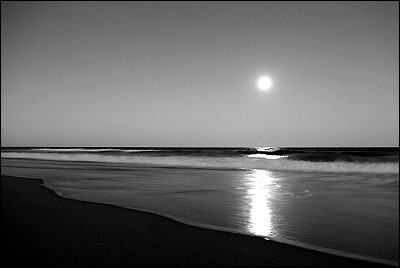 |
![]()